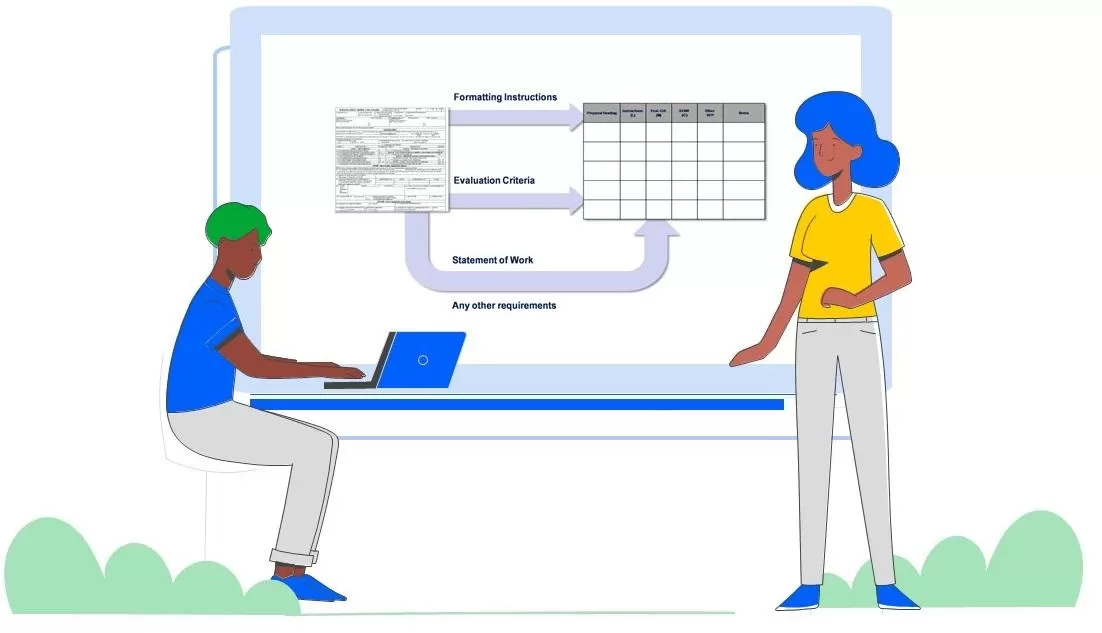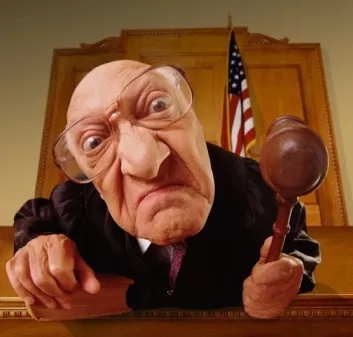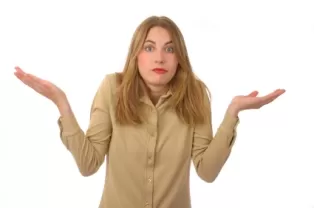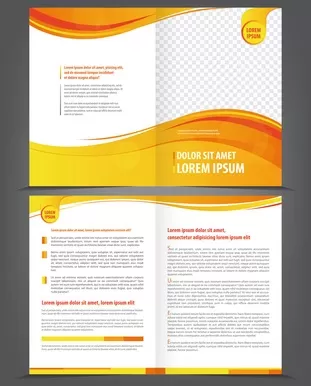Articles
-
 People sometimes struggle with addressing benefits when they write proposal copy. They stumble over what words to use and how to say things. One way to overcome this is to do away with most of the words. With a features and benefits table you focus on the key items and not sentence construction. And because they are visual and less wordy, they are friendly to the proposal evaluator as well. A features and benefits table itemizes the key elements of your approach or offering, and turns them
People sometimes struggle with addressing benefits when they write proposal copy. They stumble over what words to use and how to say things. One way to overcome this is to do away with most of the words. With a features and benefits table you focus on the key items and not sentence construction. And because they are visual and less wordy, they are friendly to the proposal evaluator as well. A features and benefits table itemizes the key elements of your approach or offering, and turns them- 0 comments
- 18,439 views
-
 One of the hardest parts of writing a great proposal in response to an RFP is dealing with the fact that many (most?) RFPs are poorly written. You can't follow the instructions, comply with the requirements, offer something great, and maximize your score against the evaluation criteria if you can't understand what the expectations are or if something in the RFP doesn't match up or is broken. Give the customer some sympathy, because writing an RFP is harder than writing a proposal. Try it so
One of the hardest parts of writing a great proposal in response to an RFP is dealing with the fact that many (most?) RFPs are poorly written. You can't follow the instructions, comply with the requirements, offer something great, and maximize your score against the evaluation criteria if you can't understand what the expectations are or if something in the RFP doesn't match up or is broken. Give the customer some sympathy, because writing an RFP is harder than writing a proposal. Try it so- 0 comments
- 5,005 views
-
 This is an article about doing proposals The Wrong Way. That is what you have to do when you are required to submit a proposal your company is not prepared for and you don’t have the information you need to win it. With all the problems and weaknesses that you have to overcome, maybe your company shouldn’t be bidding it at all, but that decision isn’t up to you. The best practices are all about preparation and won’t help you in adverse circumstances like these. So you’ve got some challenges
This is an article about doing proposals The Wrong Way. That is what you have to do when you are required to submit a proposal your company is not prepared for and you don’t have the information you need to win it. With all the problems and weaknesses that you have to overcome, maybe your company shouldn’t be bidding it at all, but that decision isn’t up to you. The best practices are all about preparation and won’t help you in adverse circumstances like these. So you’ve got some challenges- 0 comments
- 13,437 views
-
 The process detailed below for creating a proposal compliance matrix, shows writers where in the proposal they should address every RFP requirement: Definition: A proposal compliance matrix uses a grid to show which RFP requirements are relevant to each section of the proposal. A proposal compliance matrix shows proposal writers where the customer expects to find each require addressed in the proposal. A proposal compliance matrix shows exactly which RFP r
The process detailed below for creating a proposal compliance matrix, shows writers where in the proposal they should address every RFP requirement: Definition: A proposal compliance matrix uses a grid to show which RFP requirements are relevant to each section of the proposal. A proposal compliance matrix shows proposal writers where the customer expects to find each require addressed in the proposal. A proposal compliance matrix shows exactly which RFP r- 0 comments
- 29,181 views
-
 Proposal theme statements are how you articulate why the customer should select you. They deliver your message, tell your story, and flow through the proposal document. They provide the big picture and define what your proposal means. Themes may be incorporated into headings, tag lines, text boxes, or just be the main point of a paragraph. They are the message and there are many ways to deliver it. You need to be able to articulate your proposal win themes so that you can build the proposal
Proposal theme statements are how you articulate why the customer should select you. They deliver your message, tell your story, and flow through the proposal document. They provide the big picture and define what your proposal means. Themes may be incorporated into headings, tag lines, text boxes, or just be the main point of a paragraph. They are the message and there are many ways to deliver it. You need to be able to articulate your proposal win themes so that you can build the proposal- 0 comments
- 34,545 views
-
 A lot of improvisation usually goes into proposal efforts. Proposal management is often an assignment to figure out how to do something while doing it. This can result in conflicts in expectations. Conflicts like these are best resolved before they manifest. Plus it’s good not to set yourself up for failure by going in with the wrong expectations. The list below is written from the proposal manager’s point of view. And it applies to consultants as well as employees. But you can also use it
A lot of improvisation usually goes into proposal efforts. Proposal management is often an assignment to figure out how to do something while doing it. This can result in conflicts in expectations. Conflicts like these are best resolved before they manifest. Plus it’s good not to set yourself up for failure by going in with the wrong expectations. The list below is written from the proposal manager’s point of view. And it applies to consultants as well as employees. But you can also use it- 0 comments
- 12,956 views
-
 Warning: This article challenges things people may have learned about proposals when they got started. It's good to learn better ways of doing things. But I find it amazing how much resistance there is to change in this area and how much it holds improving proposal quality back. So forgive me if I'm a little too honest... With the thousands of subscribers and hundreds of companies I’ve worked with, I’ve never seen one use the color team model to achieve consistently effective proposal revie
Warning: This article challenges things people may have learned about proposals when they got started. It's good to learn better ways of doing things. But I find it amazing how much resistance there is to change in this area and how much it holds improving proposal quality back. So forgive me if I'm a little too honest... With the thousands of subscribers and hundreds of companies I’ve worked with, I’ve never seen one use the color team model to achieve consistently effective proposal revie- 0 comments
- 13,510 views
-
 Who do you need on your proposal team? The place to start is with what activities need to be covered and what skills are needed. The easiest way to account for all the activities and corresponding skill requirements is to categorize them by the roles that people play in proposal development. Proposal development roles We prefer to define roles functionally. It doesn’t matter how many people you have doing the work, as long as you have every function covered. On a small proposal you migh
Who do you need on your proposal team? The place to start is with what activities need to be covered and what skills are needed. The easiest way to account for all the activities and corresponding skill requirements is to categorize them by the roles that people play in proposal development. Proposal development roles We prefer to define roles functionally. It doesn’t matter how many people you have doing the work, as long as you have every function covered. On a small proposal you migh- 0 comments
- 12,801 views
-
 Joining a company should be about opportunity. Personal, professional, and fiscal. But where does that opportunity come from? Most jobs become a status quo. You have a role, you fulfill it. If you excel, there is the potential for promotion. But if you work on a contract for a service company, promotions and pay increases are impacted by the terms of the contract. Usually your company can't simply pay you more and charge the customer more to cover it. Usually they can't create a new positio
Joining a company should be about opportunity. Personal, professional, and fiscal. But where does that opportunity come from? Most jobs become a status quo. You have a role, you fulfill it. If you excel, there is the potential for promotion. But if you work on a contract for a service company, promotions and pay increases are impacted by the terms of the contract. Usually your company can't simply pay you more and charge the customer more to cover it. Usually they can't create a new positio- 0 comments
- 5,861 views
-
 Great proposal writing isn't based on slick words. Great proposal writing does not require the editing skills of a professional. You really don’t have to be an expert in anything to be a great proposal writer. But there is one thing that is absolutely necessary, and not everyone has it. I’m not even sure that everyone can develop it. That thing is perspective. To write a great proposal, you must be able to conceive which words to use from the customer’s perspective. You must be able to thi
Great proposal writing isn't based on slick words. Great proposal writing does not require the editing skills of a professional. You really don’t have to be an expert in anything to be a great proposal writer. But there is one thing that is absolutely necessary, and not everyone has it. I’m not even sure that everyone can develop it. That thing is perspective. To write a great proposal, you must be able to conceive which words to use from the customer’s perspective. You must be able to thi- 0 comments
- 19,159 views
-
 Subject matter experts or project managers often write the technical approach in response to the statement of work in a proposal. The Technical Approach volume addresses what you propose to do or deliver to the customer. Writing the technical approach often requires significant technical subject matter expertise. What the subject matter experts may lack in writing and fine art skills, they often make up for with enthusiasm for their subject. When they bring that enthusiasm to the proposal,
Subject matter experts or project managers often write the technical approach in response to the statement of work in a proposal. The Technical Approach volume addresses what you propose to do or deliver to the customer. Writing the technical approach often requires significant technical subject matter expertise. What the subject matter experts may lack in writing and fine art skills, they often make up for with enthusiasm for their subject. When they bring that enthusiasm to the proposal,- 0 comments
- 72,451 views
-
 Bid decisions are all about ROI. And your ROI is directly impacted by your win rate. Low win rates lead to a low ROI. High win rates make it all worthwhile. For some companies, a 10% increase in win rate is the same as a 40% increase in leads pursued. Bad bid decisions lead to a lower win rate. Bid decisions have a major impact on your ROI. If you care about ROI, then even though it's counter intuitive, you do not want to bid every opportunity you encounter. This isn’t about subjective pref
Bid decisions are all about ROI. And your ROI is directly impacted by your win rate. Low win rates lead to a low ROI. High win rates make it all worthwhile. For some companies, a 10% increase in win rate is the same as a 40% increase in leads pursued. Bad bid decisions lead to a lower win rate. Bid decisions have a major impact on your ROI. If you care about ROI, then even though it's counter intuitive, you do not want to bid every opportunity you encounter. This isn’t about subjective pref- 0 comments
- 7,646 views
-
 Maximizing win probability requires going beyond simply trying to provide the best response to the customer’s requirements. This is because: The customer is more than one person. Evaluators often have different ideas about which submission is “best.” We often do not know who will be participating in the evaluation. And yet, we know we need to write our proposals from the customer’s perspective instead of our own. This makes understanding the range of perspectives th
Maximizing win probability requires going beyond simply trying to provide the best response to the customer’s requirements. This is because: The customer is more than one person. Evaluators often have different ideas about which submission is “best.” We often do not know who will be participating in the evaluation. And yet, we know we need to write our proposals from the customer’s perspective instead of our own. This makes understanding the range of perspectives th- 0 comments
- 1,148 views
-
 There are some words you should avoid in your proposals, but most of them simply relate to unsubstantiated claims. A list of words that you should use in your proposals is a lot harder because every customer is different. If you focus on the words that should go in your proposal, you might overlook the power of a word that might not actually appear in the proposal, but that can make all the difference regarding what you do put into it. Most people only think about “what” should go in their
There are some words you should avoid in your proposals, but most of them simply relate to unsubstantiated claims. A list of words that you should use in your proposals is a lot harder because every customer is different. If you focus on the words that should go in your proposal, you might overlook the power of a word that might not actually appear in the proposal, but that can make all the difference regarding what you do put into it. Most people only think about “what” should go in their- 0 comments
- 8,924 views
-
 When you get lucky and your customer reveals something they’re thinking about doing or buying in the future, your next step should not be to pitch them on selecting you as the vendor. Instead, what you should focus on next is: Gaining an information advantage Influencing the specification Building the relationship so that more revelations may follow Besides, any deal is weeks or months away. Maybe even years. And more importantly, the customer isn't ready to think about
When you get lucky and your customer reveals something they’re thinking about doing or buying in the future, your next step should not be to pitch them on selecting you as the vendor. Instead, what you should focus on next is: Gaining an information advantage Influencing the specification Building the relationship so that more revelations may follow Besides, any deal is weeks or months away. Maybe even years. And more importantly, the customer isn't ready to think about- 0 comments
- 3,403 views
-
 Proposal losses generally fall into these categories: Price Your proposal didn't score high enough against the evaluation criteria Someone had an offering that the customer liked better You made mistakes or didn’t follow the instructions Presentation So when a proposal loses, why do people tend to focus the lessons learned on how the proposal was written? The truth is that you probably lost before the proposal started.
Proposal losses generally fall into these categories: Price Your proposal didn't score high enough against the evaluation criteria Someone had an offering that the customer liked better You made mistakes or didn’t follow the instructions Presentation So when a proposal loses, why do people tend to focus the lessons learned on how the proposal was written? The truth is that you probably lost before the proposal started.- 0 comments
- 3,379 views
-
 An Executive Summary for a proposal is not really a summary at all. If you are the customer receiving a proposal, do you really want to read a redundant summary before reading the proposal? Or do you want to find out what you’re going to get if you accept the proposal? An Executive Summary is a tool to help the reader make their decision and the evaluator to score the proposal. Extra and unnecessary reading that gets in the way and tends to annoy customers. Writing an Executive Summary that is r
An Executive Summary for a proposal is not really a summary at all. If you are the customer receiving a proposal, do you really want to read a redundant summary before reading the proposal? Or do you want to find out what you’re going to get if you accept the proposal? An Executive Summary is a tool to help the reader make their decision and the evaluator to score the proposal. Extra and unnecessary reading that gets in the way and tends to annoy customers. Writing an Executive Summary that is r- 0 comments
- 7,501 views
-
 Is proposal layout design just the icing on the cake? Does it improve your chances of winning? Is presentation everything? Or is it completely irrelevant to the decision maker? How much do impressions matter? How much effort should you put into the design of your proposal layout? What is the most important priority? I think it is like Maslow's Hierarchy of Needs applied to proposals. At the base, and your first priority, is RFP compliance. If you are not compliant with the requiremen
Is proposal layout design just the icing on the cake? Does it improve your chances of winning? Is presentation everything? Or is it completely irrelevant to the decision maker? How much do impressions matter? How much effort should you put into the design of your proposal layout? What is the most important priority? I think it is like Maslow's Hierarchy of Needs applied to proposals. At the base, and your first priority, is RFP compliance. If you are not compliant with the requiremen- 0 comments
- 11,512 views
-
 In order to win in writing, it’s crucial to be able to read your proposal the same way your customer reads it. The customer doesn’t read a proposal like a book. They probably won't even read parts of it at all! Customers read proposals with one or more purposes or goals in mind. The customer might score your proposal, compare it, or look for answers to the questions they have. What you put into your proposal should not be based on what you want to say. It should be based on what your custom
In order to win in writing, it’s crucial to be able to read your proposal the same way your customer reads it. The customer doesn’t read a proposal like a book. They probably won't even read parts of it at all! Customers read proposals with one or more purposes or goals in mind. The customer might score your proposal, compare it, or look for answers to the questions they have. What you put into your proposal should not be based on what you want to say. It should be based on what your custom- 0 comments
- 17,213 views
-
 Sometimes it helps more to know what not to do than it helps to hear more about “best practices” and all the things you should be doing. You can use this like a checklist to see where you might have gone wrong and improve your Executive Summary writing: Start your Executive Summary by introducing yourself. From the customer’s perspective, you are not as important as what they are going to get if they accept your proposal. Summarizing your qualifications. Whether or not you are qua
Sometimes it helps more to know what not to do than it helps to hear more about “best practices” and all the things you should be doing. You can use this like a checklist to see where you might have gone wrong and improve your Executive Summary writing: Start your Executive Summary by introducing yourself. From the customer’s perspective, you are not as important as what they are going to get if they accept your proposal. Summarizing your qualifications. Whether or not you are qua- 0 comments
- 9,094 views

